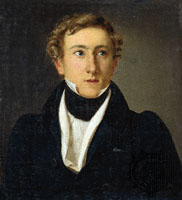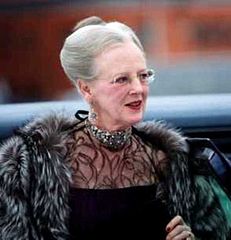 Iconic classical ballet productions such as Swan Lake, La Sylphide, Giselle, and The Sleeping Beauty are all the work of one choreographer: August Bournonville. It is arguable that La Sylphide is perhaps the most internationally famous representative of classical Danish ballet, created by Bournonville and paying homage to the distinct Danish style of classical ballet. The style was prolific, having engendered the ‘Bournonville school’ or ‘Bournonville ballet’.
Iconic classical ballet productions such as Swan Lake, La Sylphide, Giselle, and The Sleeping Beauty are all the work of one choreographer: August Bournonville. It is arguable that La Sylphide is perhaps the most internationally famous representative of classical Danish ballet, created by Bournonville and paying homage to the distinct Danish style of classical ballet. The style was prolific, having engendered the ‘Bournonville school’ or ‘Bournonville ballet’.
Bournonville was born in Copenhagen, Denmark, in 1805. He went on to dance with the famed Marie Taglioni and became a soloist with the Royal Danish Ballet, eventually serving as its balletmaster. He remained there until the end of his life, in 1879, having made 50 ballets for the company in the unique style he created from his studies in the Italian, French, and Danish schools.
Bournonville movement is characterised by the use of petit allegro (fast, intricate footwork with small jumps) rather than by big, virtuoso lifts or grand allegro. Bournonville believed that dancing should be understated, graceful, and light, epitomised by the lowered eyes of the Bournonville dancer, giving the overall appearance of graciousness. The dancer must be directly on top of the music, meaning there is very little rhythmic freedom to speed up or slow down movement. Despite this, Bournonville ballets remain expressive.
Today the Bournonville style is surrounded by the sky-high extensions and dazzling turns and jumps of other choreographic styles however the beauty and difficulty of the dances must not be underestimated. Bournonville’s ballets continue to be performed throughout the world and the Royal Danish Ballet upholds the Bournonville style as one of its proudest traditions. The style encompasses both high technical demands and an infectious celebration of life.
Image courtesy of Wikimedia Commons.


 During the festive season, the dance world is abundant with Holiday inspired productions, and 2012 is no different. The Nutcracker is always a sure-fire family favourite, full of ballet slippers, magic and mystery, however one version this year is standing out for a very different reason. Queen Margrethe of Denmark, it has been discovered, has designed all the costumes (more than 100) and four large stage sets for The Nutcracker which is currently being performed in Copenhagen by the Royal Danish Ballet at the Tivoli Theatre until 22 December 2012.
During the festive season, the dance world is abundant with Holiday inspired productions, and 2012 is no different. The Nutcracker is always a sure-fire family favourite, full of ballet slippers, magic and mystery, however one version this year is standing out for a very different reason. Queen Margrethe of Denmark, it has been discovered, has designed all the costumes (more than 100) and four large stage sets for The Nutcracker which is currently being performed in Copenhagen by the Royal Danish Ballet at the Tivoli Theatre until 22 December 2012.